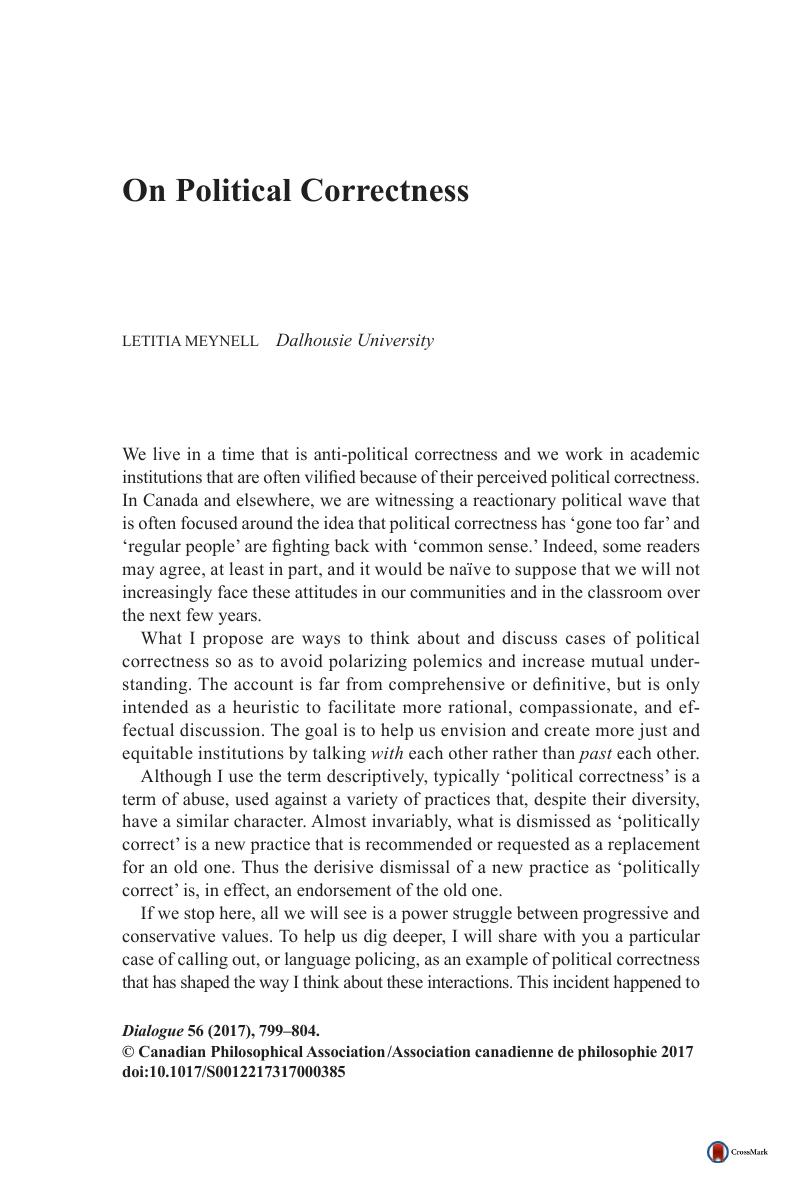Published online by Cambridge University Press: 25 July 2017

1 The Kirwan Institute has a useful primer on implicit bias: Cheryl Saats, State of the Science: Implicit Bias Review (Cleveland, OH: Kirwan Institute, 2014), available at http://kirwaninstitute.osu.edu/wp-content/uploads/2014/03/2014-implicit-bias.pdf (accessed May 27, 2017); for a more scholarly introduction see Anthony Greenwald and Mahzarin Banaji, “Implicit Social Cognition: Attitudes, Self-Esteem, and Stereotypes,” Psychological Review 102 (1) (1994): 4-27.
2 Sean Craig, “U of T Professor Attacks Political Correctness, Says He Refuses to Use Genderless Pronouns,” National Post (September 28, 2016), available at http://news.nationalpost.com/news/canada/u-of-t-professor-attacks-political-correctness-in-video-refuses-to-use-genderless-pronouns (accessed May 27, 2017).
3 ‘Cis’ or ‘cisgendered’ is the converse of ‘trans,’ ‘trans*,’ or ‘transgendered,’ denoting those people who identify with the gender they were assigned at birth.
4 PBS’s Independent Lens provides a useful “Map of Gender Diverse Cultures,” available at http://www.pbs.org/independentlens/content/two-spirits_map-html/ (accessed May 27, 2017). More scholarly sources include Sabine Lang’s Men as Women, Women as Men: Changing Gender in Native American Cultures, translated by John L. Vatine (Austin: University of Texas Press, 1998) and “Living on the Extreme Margin: Social Exclusion of the Transgender Population (Hijra) in Bangladesh” by Sharful Islam Khan et al., Journal of Health, Population and Nutrition 27 (4) (2009): 441-451.
5 Anne Fausto-Sterling, Sexing the Body: Gender Politics and the Construction of Sexuality. NY: Basic Books, 2000.
6 To get a sense of these harms experienced by trans Canadians, see Transgender People in Ontario, Canada: Statistics from the Trans PULSE Project to Inform Human Rights Policy, prepared by Greta Bauer and Ayden Scheim (London, 2015), available at http://www.rainbowhealthontario.ca/wp-content/uploads/woocommerce_uploads/2015/09/Trans-PULSE-Statistics-Relevant-for-Human-Rights-Policy-June-2015.pdf (accessed May 27, 2017).